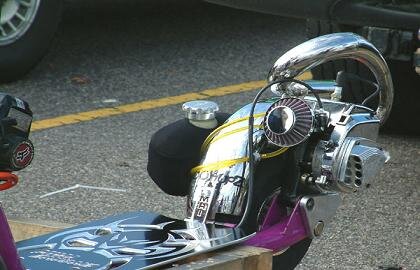I always power tune WOT 20 rpm rich of peak on glass, have not stuck a piston since. My main jets usually end up larger than what is posted on the internet. Sometimes by a lot!
The Mikuni sbn and Keihin cdk 2 carbs have a really wide range, when it comes
to acceptable main jets.
A 5/16" or 8mm id insert swedged & glued into the SBN main jet booster will
make it easier to find the correct main jet size because it is easy to find the point
where the main is rich. So reducing main jets until it smoothly transitions is much
easier.
For me, I can't recommend how I used to develop my main jet sizing because it
is to easy to settle on a main jet that is too lean. So I end up having to recommend
safe alternatives to find a main jet size. Unfortunately trying to find a main jet size
is time consuming and most people want it to be a quick process. Most people
just don't have the patience to develop good specs.
But with the idle drop test, you can develop a low speed jet, needle & seat, spring,
and pilot screw setting rather quickly. And by having a properly adjusted low &
pilot circuit you will not have problems with that circuit affect the high speed
circuit. A rich pilot (low speed) screw will kill peak rpm.
When jetting I try to achieve 3/4 pilot (low) screw and 3/4 on the hi speed screw.
I also use 1/4 turn = 1 jet size. That is always the goal whether it is standard or
reverse jetting.
When I am calculating Reverse jet specs, I incorporate the 1/4 turn = 1 jet size into
the original jet specs (so long as they are not frivolous adjustments made for
goon clearance, like some pipe specs).
Bill M.
The capabilities to make a home made data acquisition system to collect rpm
and exhaust gas temp is easy these days with an Arduino, and EGT modules
from "Playing with Fusion." On the dyno, Kawasaki used ~900 degrees for the
main jets.





